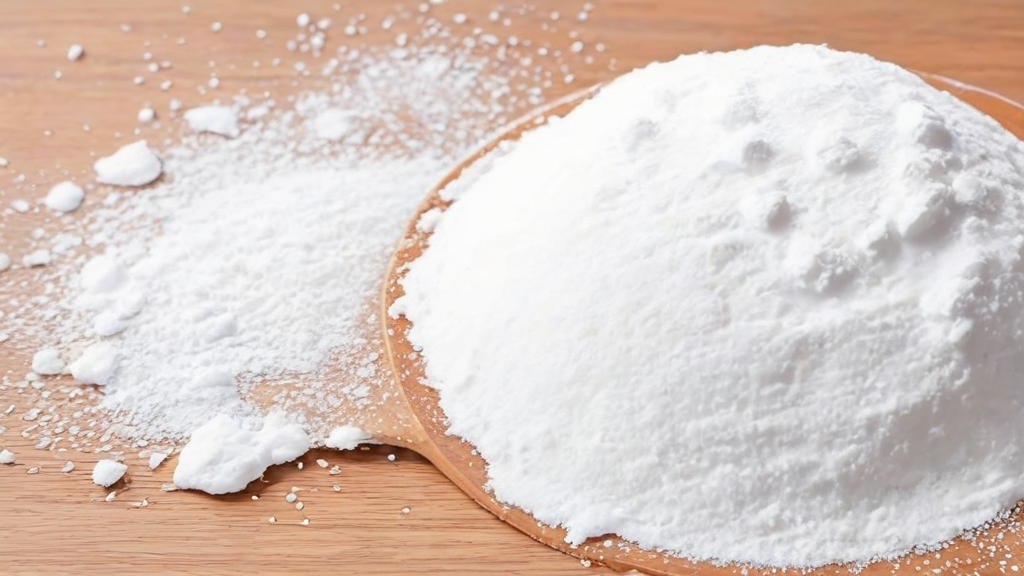Cream of Tartar Basic Facts
Cream of tartar is potassium bitartrate, also known as potassium hydrogen tartrate, which has a chemical formula of KC4H5O6. It is an odorless white crystalline powder.
Origin of cream of tartar
Cream of tartar is obtained during the fermentation process of grapes in winemaking. Potassium bitartrate crystals can precipitate from grape juice or be found in the corks of wine bottles.
Uses of cream of tartar
Cream of tartar has various uses in the kitchen and beyond. Some of them are:
1. Whipped Cream Stabilizer
Added to whipped cream after whipping to maintain its stability
2. Increased volume of egg whites
Added to egg whites when beating to increase their volume and help them hold peaks at higher temperatures
3. Reduced discoloration of vegetables
Added when boiling vegetables to reduce discoloration
4. Key ingredient in baking powder
It is one of the key ingredients in some baking powder formulations, where it reacts with baking soda and an acid to produce carbon dioxide and promote rising in baked goods.
5. Present in sodium-free salt substitutes
Found with potassium chloride in sodium-free salt substitutes
6. Use in glazes and cleaning
It is used to make icing for gingerbread houses and other frostings, where it acts to prevent sugar from reattaching and crystallizing. Also used to clean brass and copper cookware and accessories
7. Present in various products
Cream of tartar is used in soft drinks, gelatin, photography chemicals, baked goods, and many other products.
Shelf life and replacement of cream of tartar
Cream of tartar remains effective indefinitely as long as it is kept in an airtight container away from heat and direct light.
If you need to substitute the cream of tartar, you can use vinegar or lemon juice instead. In baking recipes, a little more of the liquid ingredient is needed to obtain the same acidity
